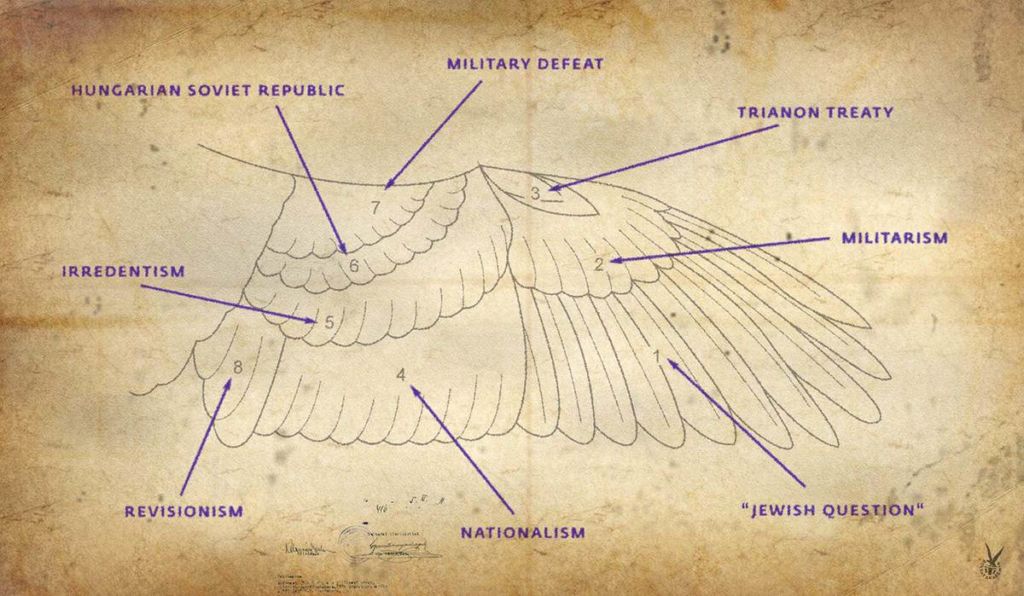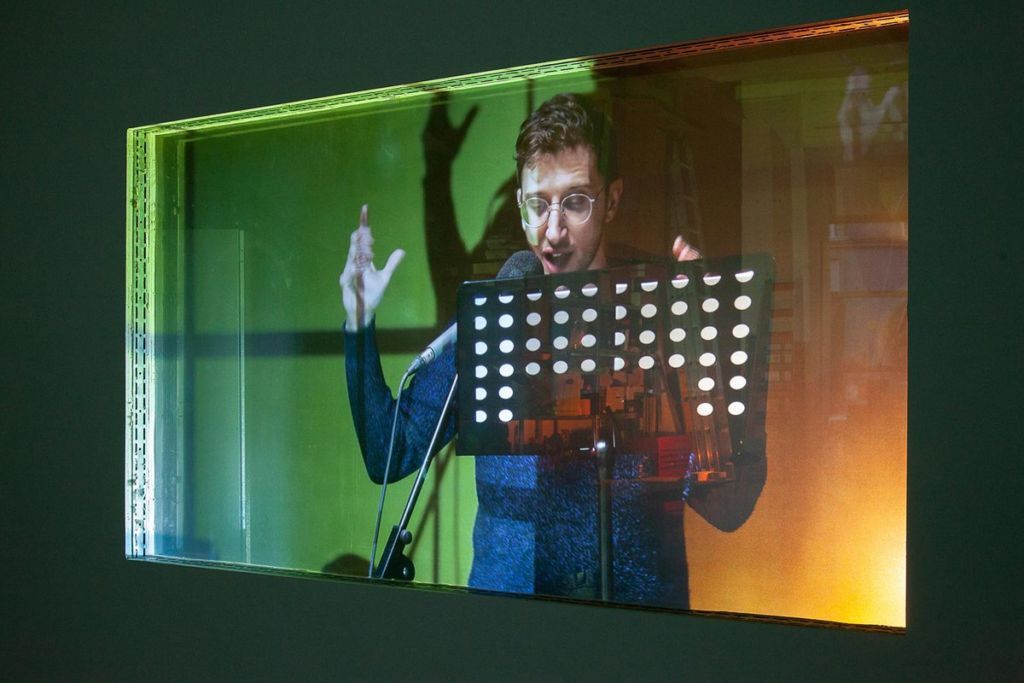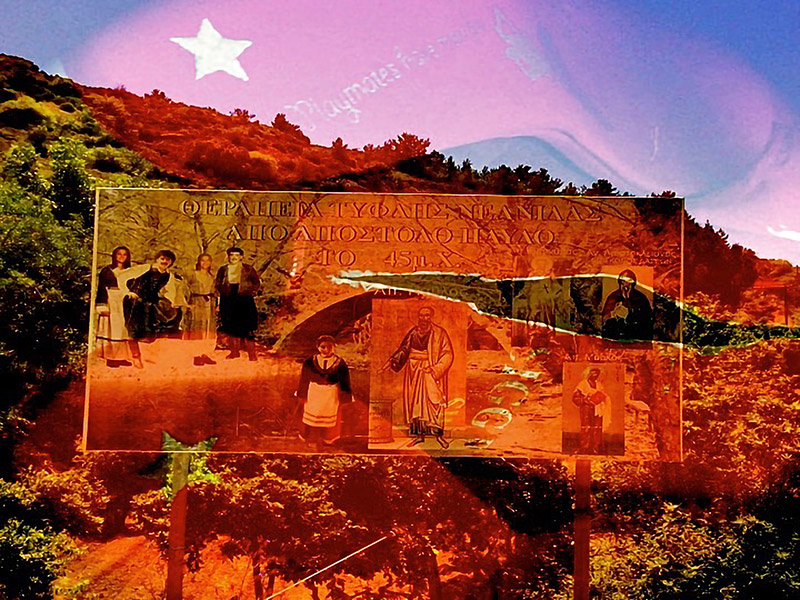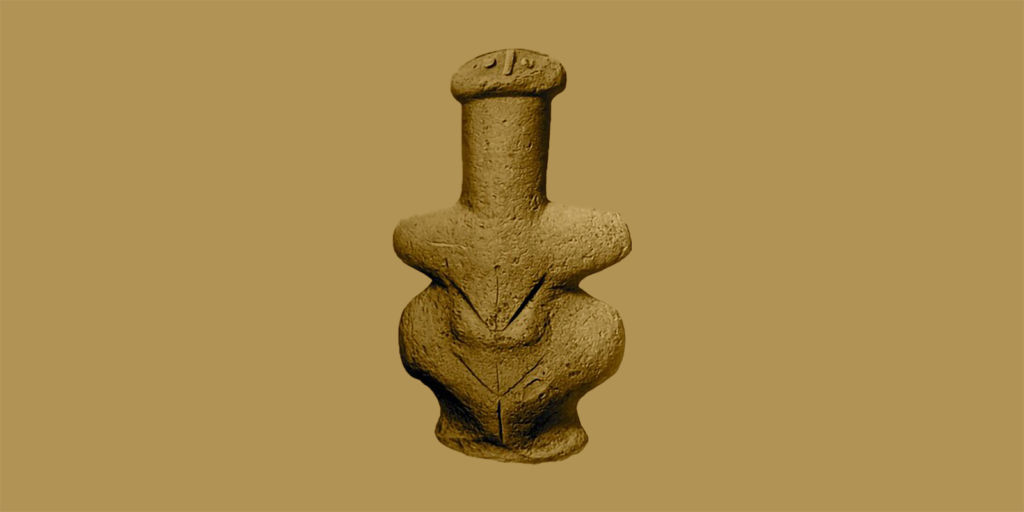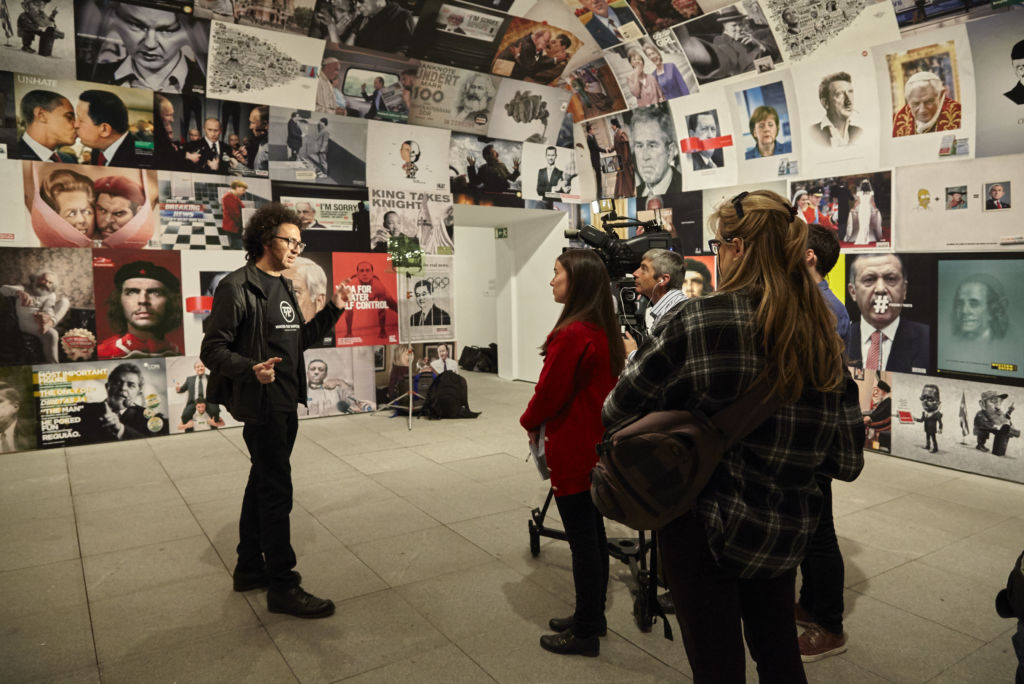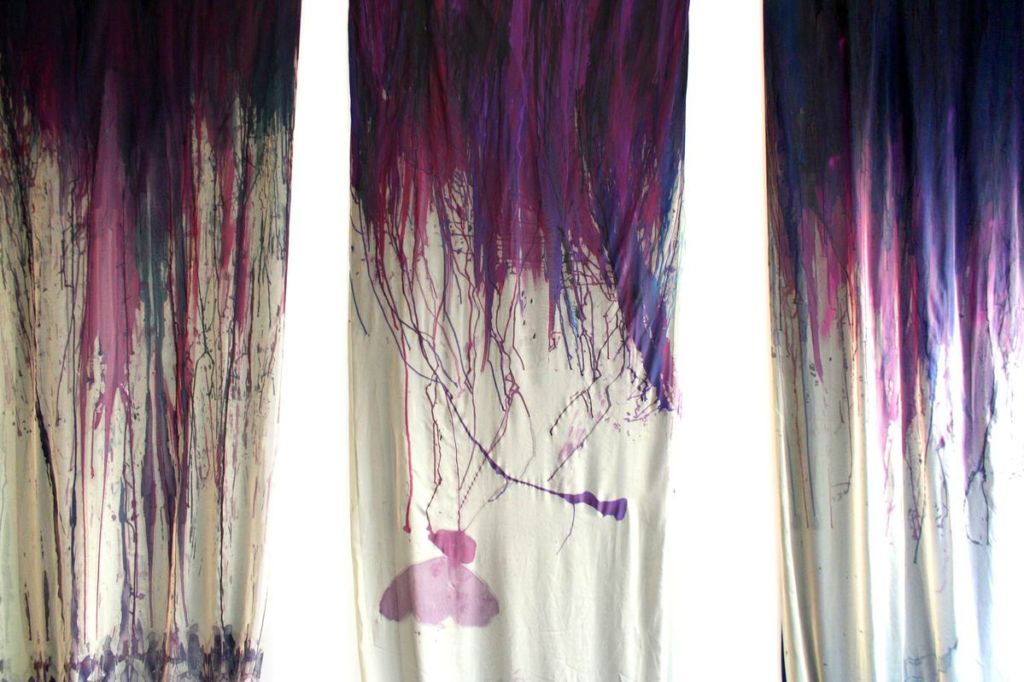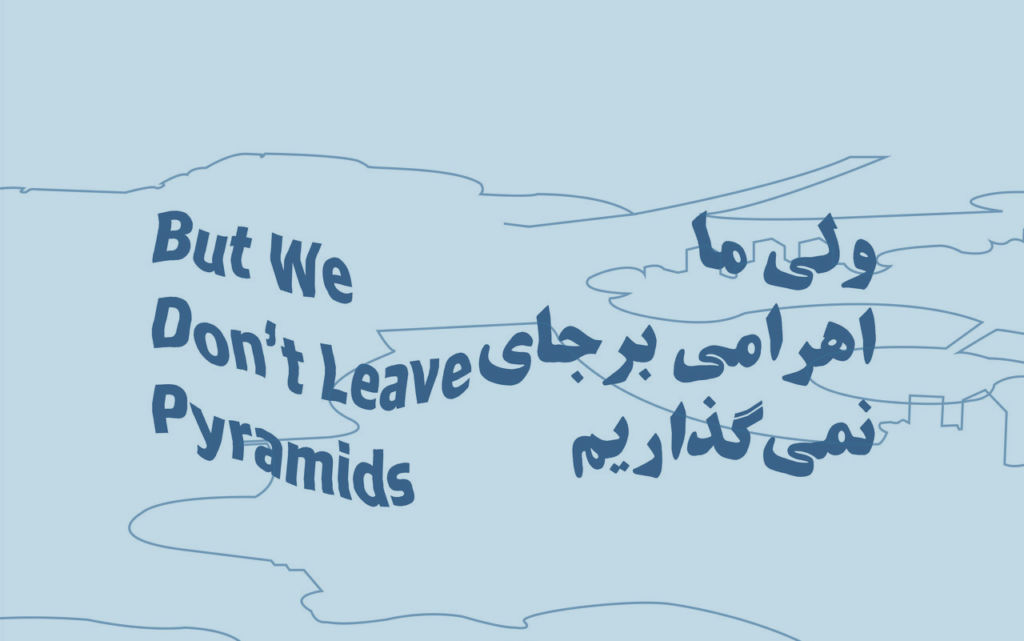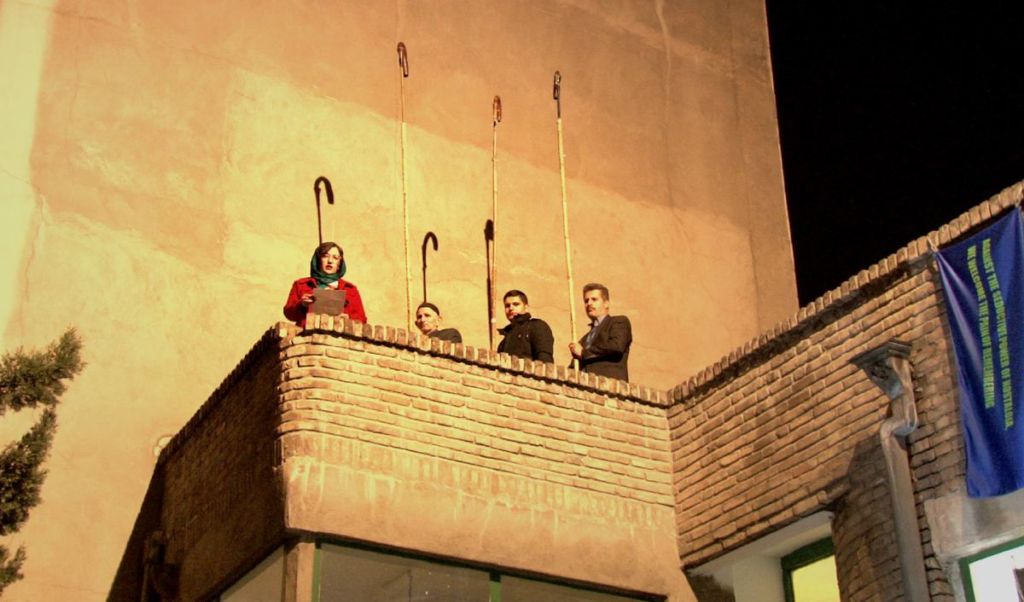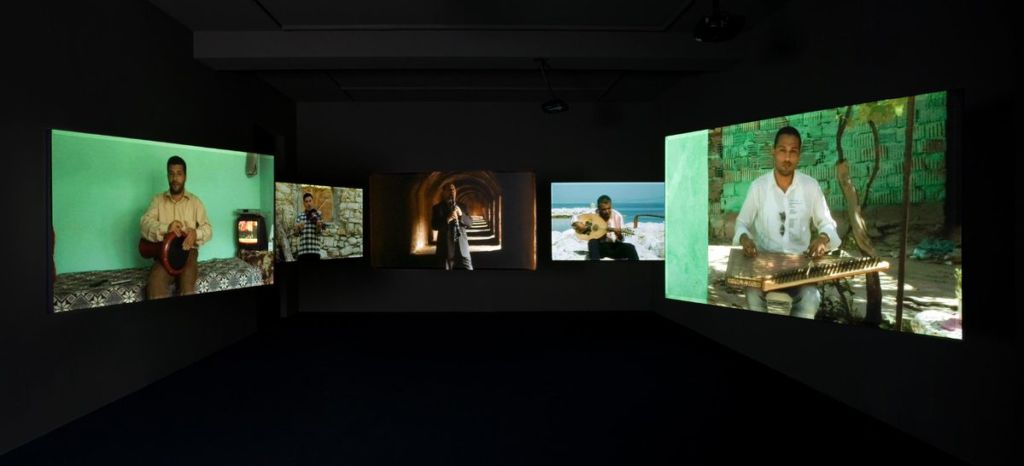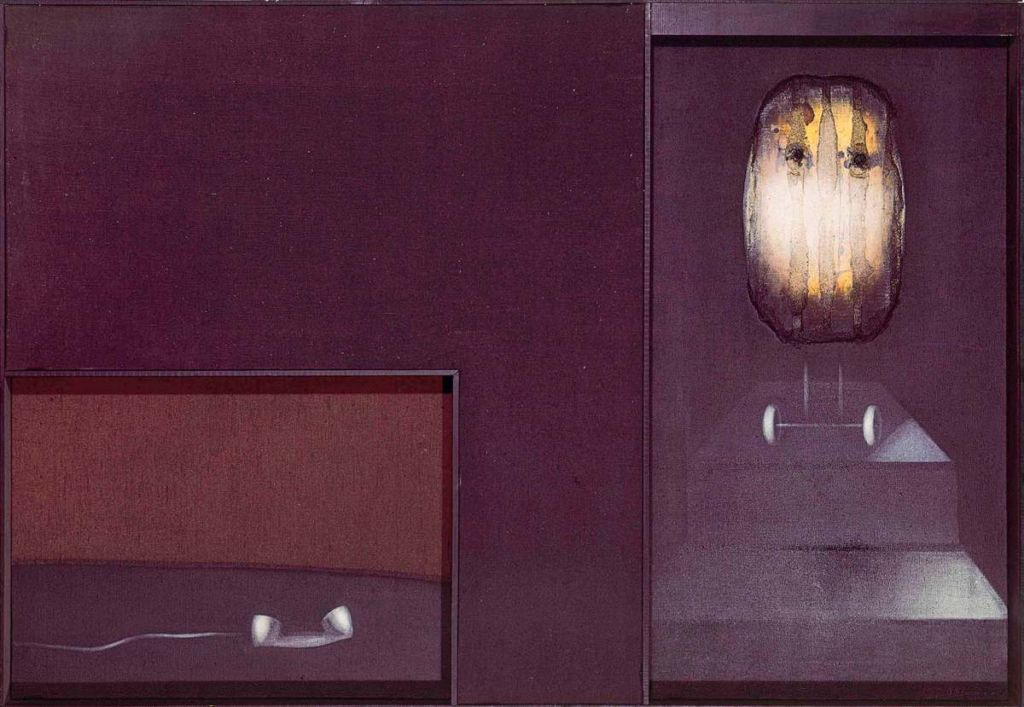Haunted by the mass destruction and industrialised killing for which World War II was the stage, but also by Cold War tensions and the onset of nuclear armament, Gustav Metzger wrote a first manifesto in 1959 in favor of “auto-destructive” art. It is a call to reflect on and radically experiment with the planned obsolescence of materials and the processes of decay that ultimately lead to their disappearance, contextualized by the artist within Western society’s morbid fascination for destruction and, from 1960 onward, the man-made devastation of nature.
Né en 1926 à Nuremberg, dans une famille de confession juive, Gustav Metzger quitte l’Allemagne pour l’Angleterre en janvier 1939 avec un de ses frères, dans le cadre du programme humanitaire du Kindertransport. Ses parents meurent en camp de concentration.
Joseph Beuys, 7 000 Eichen : Stadtverwaldung statt Stadtverwaltung ; 7 000 chênes, pour la documenta 7, à Kassel en 1982.
Barbara Novak, Common Ground, Five Artists in the Florida Landscape, cat. exp., Sarasota, John and Marble Ringling Museum of Art, 1982, p. 63. Citée dans Pierre Lagayette (dir.), Nature et progrès, Paris, PUPS, coll. « Frontières » (n° 12), 2006, p. 312. Trad. de l’anglais par J.-F. Allain.
Amy Balkin, Free Seas, Free Skies, conférence tenue le 18 septembre 2010 à l’University College London.
Public Smog, Amy Balkin, Green Museum
Gustav Metzger, Damaged Nature, Auto-destructive Art, Londres, Coracle Press, 1996.
Id., Ibid., p.11.
Lire la passionnante recherche de Serge Audier sur les prémisses de la conscience écologique et les liens entre émancipation sociale et pensée de la nature. La société écologique et ses ennemis, pour une histoire alternative de l’émancipation, La Découverte, Paris, 2017.
La COP 21 ou Conférence de Paris sur le climat s’est déroulée du 30 novembre au 12 décembre 2015 au Bourget en France. Elle a réuni 195 pays autour des enjeux liés au climat, avec pour objectif une limitation du réchauffement mondial entre 1,5 °C et 2 °C d’ici 2100. 21e du genre, cette conférence au sommet s’inscrit dans la lignée de Stockholm, qui marqua, en 1972 le début de ces grand rendez-vous internationaux.
Will Steffen, Jacques Grinevald, Paul Crutzen et John McNeill, « The Anthropocene: Conceptual and Historical Perspectives », Philosophical Transactions of the Royal Society A, vol. 369, 2011, p. 842-867.
Jean-Baptiste Fressoz, « L’Anthropocène et l’esthétique du Sublime », in Sublime. Les tremblements du monde, sous la direction d’Hélène Guenin. Editions Centre Pompidou-Metz, p. 45.
www.todayandyesterday.co.uk/
Extraits de la conférence de Gustav Metzger, Facing Extinction, juin 2014. https://gustavmetzgerucafarnham.wordpress.com/2014/02/21/gustav-metzger-at-uca-farnham/
Gustav Metzger, Extinction 2010, publié dans Le Républicain Lorrain. Projet organisé par Mathieu Copeland avec le centre d’art contemporain – la synagogue de Delme.
Jean Malaurie, Terre Mère, CNRS éditions, Paris, 2008, p. 13.
Gustav Metzger: Influences, Entretien avec Paul Clinton, assistant editor de Frieze et Frieze Masters Magazine, mars 2016. Source www.frieze.com
Credo written by Edmond Szekely and Romain Rolland, Nobel Prize for Literature, in Paris, 1928.
In 1957, against the backdrop of the first major civil nuclear accident in the West at the Windscale plant in England, and amidst mounting controversy surrounding the British H-bomb testing between 1956 and 1958, Gustav Metzger makes his founding contribution to the King’s Lynn Campaign for Nuclear Disarmament committee. In 1960, he also participates in the famous “Committee of 100” that calls for civil disobedience and non-violent action. Directed by philosopher and logician Bertrand Russell and reverend Michael Scott, the apolitical organization welcomes Gustav Metzger as its unofficial secretary, and in this function, he drafts a manifesto that begins with the ethical imperative: Act or Perish.
He creates his first public acid paintings in 1960, repeating the experience on an even larger scale the following year on the South Bank of London. Donning a gas mask, gloves and a spray gun, he douses three enormous canvasses in hydrochloric acid and as they disintegrate little by little, walks through the structures, passing through the shreds of nylon. Metzger consciously implements equipment that, aside from offering protection, corresponds directly to the level of toxicity. For him, the very fact of wearing a gas mask and gloves suggests danger, a threat, and by extension, spraying acid becomes an act of aggression. Photographs and films of the performance document the event, and the intentional annihilation of materials alludes directly to the use of chemicals for military purposes as well as the widespread post-war popularity of dousing crops in insecticides, such as the famous DDT.
Earth Minus Environment – Making the invisible tangible
Still in 1960, Metzger declares, in his second manifesto on auto-destructive art: “Auto-destructive art re-enacts the obsession with destruction, the pummeling to which individuals and masses are subjected. Auto-destructive art demonstrates man’s power to accelerate disintegrative processes of nature and to order them.”1
In 1970, he has a customized car, Mobbile, drive through London. On the roof is a large transparent cube containing green plants, connected directly to the car’s exhaust pipe. As the car drives through the city, the fumes slowly asphyxiate the plants.

Mobbile, 1970- 2005, Perspex box, plant, variable size, installation view of Generali Foundation, Vienne. Courtesy of Generali Foundation. © Photo: Pez Hejduk
On January 1 of the same year, 1970, millions of Americans protest pollution on the first ever Earth Day. Invited by the renowned curator Harald Szeeman to participate in documenta 5 in Kassel, 1972, Metzger devises the KARBA installation in which exhaust pipes from four vehicles are hooked up to a plastic pavilion, filling the entire volume with emissions. The project is not carried out and spawns a second initiative to take place in Stockholm, also in 1972, as part of the first United Nations Conference on the Human Environment. During the two-week summit, the plan is for 120 cars to emit their pollution into a rectangular plastic structure. The project is eventually carried out in 2007 with 100 cars, for the Sharjah Biennial.
He also envisions a second phase entitled Project Stockholm, June, which consists of gathering several identical cars inside a container and exposing them to such high concentrations of exhaust and pressurized gas that they would eventually combust. These time bombs, Project Stockholm June, (Phase 1) and (Phase 2) are a spectacular—and therefore tangible—illustration of how pollution and ecological degradation caused by human activity pose a real threat, from the use of private cars to the emissions and particles spewed out by the industry that manufactures them. The installation’s design and staging also allude to the Holocaust, and to how Nazis used carbon monoxide fumes to kill deportees in some of the extermination camps or in mobile killing units such as in Chelmno, Poland, beginning in December 1941.
For the UN-organized Earth Summit in Rio in 1992, Metzger proposes Earth Minus Environment. “The sculptural project will consist of 120 cars arranged outdoors around a large construction in the shape of the letter E. The cars whose engines will be running day and night, will lead their exhaust into the plastic-enclosed structure. (…) The cars will stand side by side around the inside as well as the outside of the E, with the rears of the car facing it, and the exhaust brought into the structure by means of tubes. Day by day, the gas, water and dirt from the exhaust will transform the appearance of the work, as it settles on the interior of the plastic.”
Still in 1992, Metzger writes in Earth Minus Environment: “I am particularly concerned with cars as London is heading for a gridlock situation where traffic will come to a halt, or any other major city because there are too many cars on the roads (…). It will be too late to enforce any satisfactory measures and the situation will be incredibly chaotic. My answer, which is brutal and perhaps too simple, would be to take the car off the road and radically change the entire social system.”
The debates on carbon footprints and CO2 emissions, popularized by the Kyoto protocol ratified in 2005, confirm the relevance of Gustav Metzger’s questions and criticisms from 1970 onward, and the effectiveness of the forms he invented to manifest these problems. They resound like echoes bouncing off the willful, blank ignorance of society. The invisible destiny of disaster, rendered tangible and intolerable through the artist’s propositions, constitutes one of the major environmental landmarks of the second half of the 20th century.

Earth Minus Environment (Model)
1992, Model, wood perspex, model cars, 122 x 122 cm
Courtesy of the Artist © Photo: Wojciech Olech – Photo courtesy: CoCA Toruʼn
Planetary stakes
Metzger’s activism is not the only of its kind: in the late 1960s, Robert Smithson develops an entire thought-process regarding disaster and entropy nourished by science fiction and geology. His interest lies mainly in industrial sites and abandoned mines, amongst others, and in accounting for the contemporary reality of these landscapes as forever changed by the presence of mining, without nostalgia. Together with Jean-Pierre Mirouze, Arman directs the film Sanitation (1972), which shows the repressed aspects of city life: mountains of rejected waste accumulated onto an artificial island just off shore from Battery Park in New York. The same year, Hans Haacke’s installation Rhine Water Purification Plant at the Museum Haus Lange de Krefeld reveals the fragility of the ecosystem and the invisible pollution threatening our rivers, while in 1971, Joseph Beuys leads a protest against a deforestation project, which later builds into a proposition for documenta 7 in Kassel2, 1982, to plant seven thousand oak trees in an effort to sound the alarm about the forces gathering to destroy nature and life3.
Strategies similar to Metzger’s also appear in American activist and feminist circles starting in the late 1970s, with artists like Louise Odes Neaderland, Dona Ann McAdams and Sharon Gilbert inventing forms that are often modest and highly transmissible, straddling the boundary of art and activism (flyers, postcards, posters, ‘zines), in a call for nuclear vigilance and as a way to alert people to the environmental and health repercussions of our energy choices and insecticide use.
There are numerous examples of how environmentalist art first emerged in Europe and the United States. Though the criticisms and forms sometimes echo Gustav Metzger’s contestatory stance and his strategies drawn from political activism, he nevertheless remains one of the only artists to systematically frame things in terms of environmental destruction and our accelerating demise.
Art historian Barbara Novak also makes the parallel in 1982 when she states that nature’s destiny of being subjected to violence also awakens our own sense of mortality—the destruction of
nature foretells our own destruction. ‘Do we situate ourselves outside of this nature or are we a part of it?4‘
In 2007, Metzger launches the campaign Reduce Art Flights. The acronym, RAF, deliberately resembles the Royal Air Force initials. The initial leaflet, distributed in Münster for the project Skulptur Projekte, was inspired by a Royal Air Force poster from 1942 that details the aerial bombardment of Germany during World War II. Beyond this historical reference, Metzger makes a personal appeal for us to engage in ethical practices and to raise awareness in the art world about how it actively contributes to environmental degradation through the intercontinental transportation of artworks and people in the name of large-scale international cultural events. This call stems from Metzger’s own commitment, practiced throughout the years, to reducing his travel as much as possible. The website (http://www.reduceartflights.lttds.org) is set up as part of the “Greenwashing. Environment: Perils, Promises and Perplexities” exhibition presented in 2008 at the Sandretto Re Rebaudengo Foundation in Turin, accompanied by a general call to “reduce, reuse, recycle” and to resist the increasing pressure for unnecessary international travel that is endemic to the art system.
Today, artists are picking up where he left off, such as Amy Balkin, who also makes use of participatory projects. She works to emphasize the interactions between humans and environment, and the need for more legal regulation in this area5. To do so, she launched the project Public Smog in 2004, an attempt to subvert the carbon credit scheme designed to finance compensatory measures for pollution made by companies. The artist purchases several credits, extracting them from the system’s speculative potential and creating symbolic “clean-air parks6”. Parallel to this, she has been actively campaigning since 2012 for the atmosphere to be added to the list of Unesco world heritage sites.
Nature versus environment
By situating her action at the heart of the capitalist system and subverting the mechanisms of international compensation, Amy Balkin appropriates a major issue of contemporary debate: the attribution of economic value to species and ecosystems and the price of their destruction. This appraisal and monetization of nature is also motivated by something else: the desire to build tangible tools of persuasion, to invest in financial jargon by determining a “natural capital” that encompasses and evaluates all resources (geology, ground, air, earth, all living forms) and natural phenomena (pollination, climate regulation, etc.).
For an entire branch of the environmental conservation effort, this monetization scheme seems to be the only way to make government authorities and industrial interest groups aware of this capital’s importance and the losses that result from its destruction – the only pragmatic alternative to decades of failure in convincing them that nature is intrinsically valuable and without measure. Regardless, the discourse is a double-edged sword. Under the pretext of raising awareness and offering incentives for ethical practices, and based on systems of evaluation and transaction, it underscores the ambiguity and even the long-term harmfulness of actions that generate “payoffs” or “rewards” like the ones established and maintained by government programs. Take for example the “reforestation” campaigns to plant eucalyptus in the Amazon that is supported by several different nations. The ecological toll has been disastrous, the new plantations dry out the soil and empty it of nutrients, depleting its nitrate content, etc. and thereby embodying the perverse effects of institutionalized greenwashing.
Recognizing the slippery slope of this approach, Metzger begins a written analysis in the early 1990s of what is at stake when we talk about environment – currently defined as “a system of elements (biotic of abiotic) that surround an individual or a species and provides for their needs”—rather than nature. He emphasizes the ideological danger of this slip and its capitalist undertones in his 1992 publication Nature Demised Resurrects as Environment7. “The environment becomes a product. Once there is a product, you can buy, sell and exchange it8.” One cannot help but think of Charles Fourrier, one of the first thinkers to compile a radical analysis of the “planet’s material degradation”, expressed in an acerbic critique of capitalism that interweaves ecological peril with social misery9. In the end, refusing to adhere to an anthropocentric view of ecology, Metzger seems closer to Arne Naess’ vision in 1973 of deep ecology, which is based on a fundamental principle advocating dignity for all forms of life, in equal measure, and questioning the centrality of mankind’s role and interests: “The well-being and flourishing of human and nonhuman life on Earth have value in themselves.”
Metzger in the Anthropocene era
The term ‘ecocide’, long used to describe the degradation or destruction of an ecosystem, finds itself replaced in the early 2000s by the term ‘Anthropocene’, popularized by the atmospheric chemist and meteorologist Paul J. Crutzen. Heavily debated during the Paris Climate Conference (COP 21)10, the concept describes a new potential geological era in which the past two centuries of humanity are responsible for triggering a rate of change equivalent in force to the climatic and natural factors that shaped Earth over several millions of years, to such an extent that it constitutes a global geological force in its own right11. Over the span of just a few generations, since the beginning of the industrial revolution, humanity has catalyzed events that will mark the geology of the planet for millions of years to come: “The carbon dioxide levels in 2015 are unprecedented in the past 3 million years, and the current rate of extinction amongst species is higher than in the past 65 million years, ocean acidification higher than the past 300 million years, etc. We are not simply facing an ‘environmental crisis’, but a geological revolution originating in human activity 12.
In Manchester, 2009, Metzger creates an immense still life of twenty-one willow trees planted upside-down in a giant concrete slab. Flailing Trees is one of his last pieces and inverts the natural order by making roots and organic matter rise toward the sky while treetops are buried, inert and condemned to degenerate. Starved of their usual resources and suffocated within the concrete slab, the trees slowly shrivel up and curl into themselves. At a time when forests are razed en masse by machines in the name of growth and productivity, when concrete and asphalt cover more and more of the Earth’s surface, Flailing Trees –or Mirror Trees in their individual versions—echoes the beauty of nature and the violence done to her. “I’m aiming at people saying, ‘My God! What a mistreatment of beautiful young willow trees!’ (…) Trees are being mistreated all the time. Violence and trees go together.”
As usual with Metzger, this plea is part of a larger strategy and cry for public attention. For every silent monument or funeral march dedicated to disappearance, he also initiates an occurrence of Mass Media: Today and Yesterday13. Hundreds, perhaps thousands of newspapers stacked in an immense pile in the middle of the space await visitors. Each person is invited to react subjectively to keywords and various points of view suggested by Gustav Metzger: extinction, in all its forms and manifestations/life forms threatened throughout the oceans of the world/pollution in cities and the countryside/natural catastrophes/our contemporary way of life… and to post titles, articles from the press or photographs selected from the mass of newspaper information. “I want this work to be useful, to emphasize the dangerous environment in which we live – events of life and death that can lead to extinction.”

Mass Media: Today and Yesterday, 1972-2017, exhibition view in Neuer Berliner Kunstverein in 2015, participative installation, newspapers, table, magnetic painting and magnets. Courtesy of the artist. © Photo: Jens Ziehe
The massiveness and obsolescence of these collected newspapers also underline how the avoidance strategies of today’s consumerist information society threaten the environment. “The art, architecture and design world needs to take a stand against the on-going erasure of species – even where there is little chance of ultimate success. It is our privilege and our duty to be at the forefront of the struggle. There is no choice but follow the path of ethics into aesthetics. We live in societies suffocating in waste. Every time you consider buying a new laptop or mobile phone, you need to recall the agonizing photos of young men, prematurely aged, who spend their shortened lives dealing with the toxic technology discarded by our civilization14.”
In 2015, he spearheads a new project with Central Saint Martins College of Arts and Design in London, a day entitled “Remember Nature” that invites students to appropriate these themes by initiating a project, performance, conference and call for action on social media or in the street, etc. In this way, Metzger incites new generations to seize these crucial issues that will concern them more and more, and to use any symbolic, creative, information or contestatory means possible to do so.
Act or Perish
This slogan, which introduced the manifesto of the Committee of 100 in 1961, remains deeply embedded in Gustav Metzger and constitutes an ethical horizon underlining the urgency of vigilance and lucidity. The constancy of his dedication for over fifty years, his intentionally marginal presence in the art world, the radical and evanescent nature of the forms he invented and his insistence on guarding them from commercialization, are all evidence of a rare equality and continuity between activism and thinking. They also reveal the constancy and coherence of Metzger’s actions, arguments and strategies: no or very few objects produced, little permanence, forms of shared experience and reflection, in order to reveal the responsibility of each individual within a global system.
Throughout his existence, the appeals he made against doing violence to any form of life, with the sharp conscience of someone who just barely escaped programmed death, remind us of the vulnerability and ephemeral nature of everything. The project Extinction15, published in 2010, brings back the gas mask motif previously used in the leaflets for the Committee of 100, and is reminiscent of his performance at South Bank in 1961. The publication highlights once again a parallel that Metzger has constantly drawn, since the very start, between weapons or strategies of mass destruction and environmental issues. The collage unites one of his manifesto texts with newspaper headlines that remind us of how environmental degradation is an accelerating process: “1 million species threatened by extinction” or “30 years to save planet Earth”, or even “A squandered heritage: EARTH”, etc.
Undoubtedly, Gustav Metzger could be described today as someone who has been sounding the alarm. I prefer the term “sentry” as used by Jean Malaurie: “We are all sentries, watching as globalization runs rampant, the disarray of progress. If we are not vigilant, we will progress into devastation16.” If Metzger continually shook up the spectrum of auto-destruction, it was in the name of—and in defense of—life. As he states in a recent interview17, one author in particular has shaped his life and way of working: Edmond Szekely. Together with Romain Rolland, Szekely founded the International Biogenic Society in 1928. Driven by the desire to promote simple living, in harmony with the earth and life, this society sought to follow the eating habits of the Essene. It is part of a constellation of communities that attempted throughout the 20th century, and particularly since the 1970s, to invent alternative, ecological ways of living in the world. And the society’s credo resonates even more forcefully in Gustav Metzger’s struggle:
“We believe that our most precious possession is Life.
We believe we shall mobilize all the forces of Life against the forces of death.
(…)
We believe that we shall avoid the pollution of our air, water and soil, the basic preconditions of life.
(…)
We believe that the improvement of life and mankind on our planet must start with individual efforts, as the whole depends on the atoms composing it18.”
Translation by Maya Dalinsky
Cover: Exhibition view « Gustav Metzger. Remember Nature » at MAMAC, Nice, february-may 2017. Views of Mass Media: Today and Yesterday, 1972-2017 et Mirror Trees, 2017 – reactivations at MAMAC. © Photo: Ville de Nice.
An earlier version of this article appeared in Gustav Metzger. Remember Nature, published by MAMAC and Silvana Editoriale, 2017.



